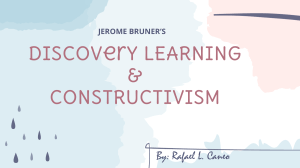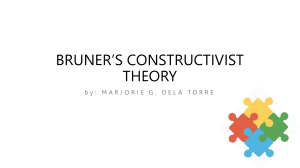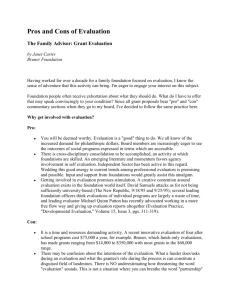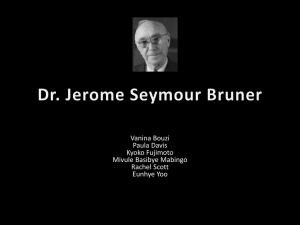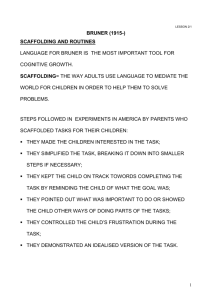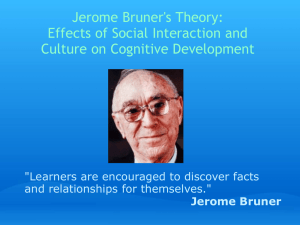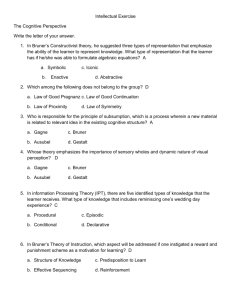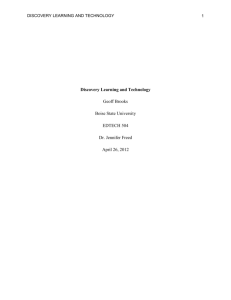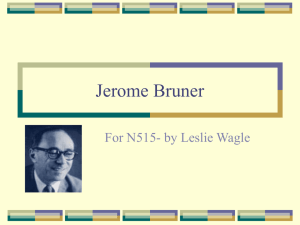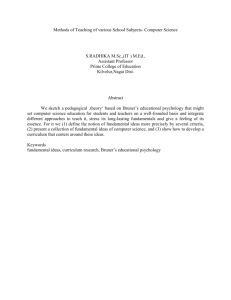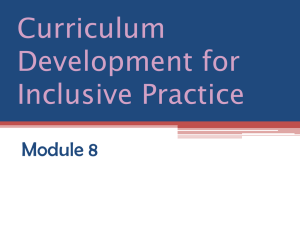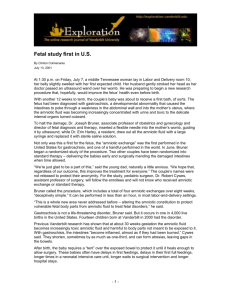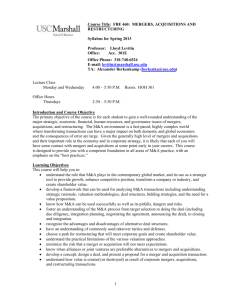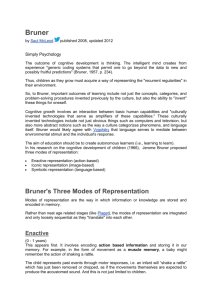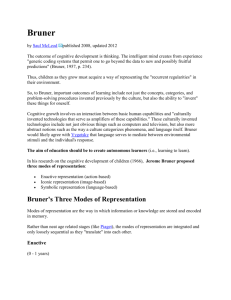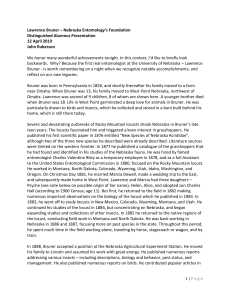File
advertisement
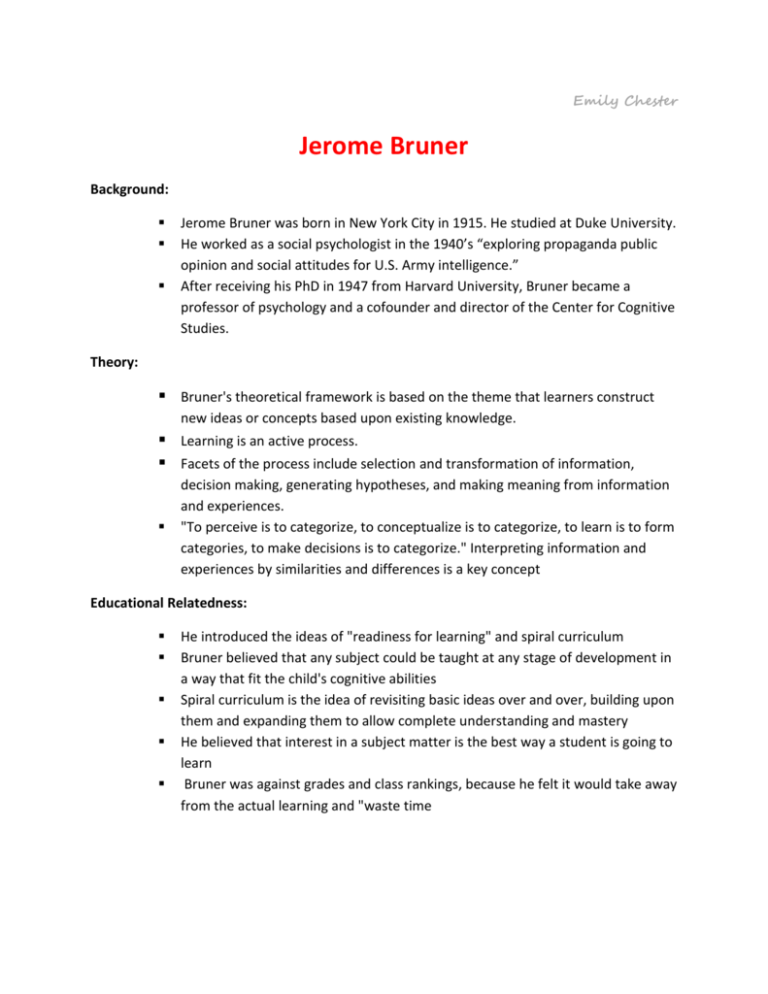
Emily Chester Jerome Bruner Background: Jerome Bruner was born in New York City in 1915. He studied at Duke University. He worked as a social psychologist in the 1940’s “exploring propaganda public opinion and social attitudes for U.S. Army intelligence.” After receiving his PhD in 1947 from Harvard University, Bruner became a professor of psychology and a cofounder and director of the Center for Cognitive Studies. Theory: Bruner's theoretical framework is based on the theme that learners construct new ideas or concepts based upon existing knowledge. Learning is an active process. Facets of the process include selection and transformation of information, decision making, generating hypotheses, and making meaning from information and experiences. "To perceive is to categorize, to conceptualize is to categorize, to learn is to form categories, to make decisions is to categorize." Interpreting information and experiences by similarities and differences is a key concept Educational Relatedness: He introduced the ideas of "readiness for learning" and spiral curriculum Bruner believed that any subject could be taught at any stage of development in a way that fit the child's cognitive abilities Spiral curriculum is the idea of revisiting basic ideas over and over, building upon them and expanding them to allow complete understanding and mastery He believed that interest in a subject matter is the best way a student is going to learn Bruner was against grades and class rankings, because he felt it would take away from the actual learning and "waste time Scaffolding: Part of Bruner's theory was "scaffolding" Scaffolding is the idea that children need support and active help from teachers and parents if they are going to become independent learners as they mature. Bruner’s scaffolding theory states that children are somewhat dependent on those who have more knowledge than they do in certain areas when they begin learning. As students become more independent, the help from teachers and parents decreases until the students start learning on their own, much as scaffolding used to support construction workers and their materials is removed as a building project nears completion. Conclusion: Jerome Bruner was one of the many educational theorist looking at cognitive development in your people to determine many educational advances. Bruner was the one who reached past the earlier theories and created his own. The paradigm or idea behind Bruner’s scaffolding and constructivist theory can be used across all age and grade levels and across all subject areas.
